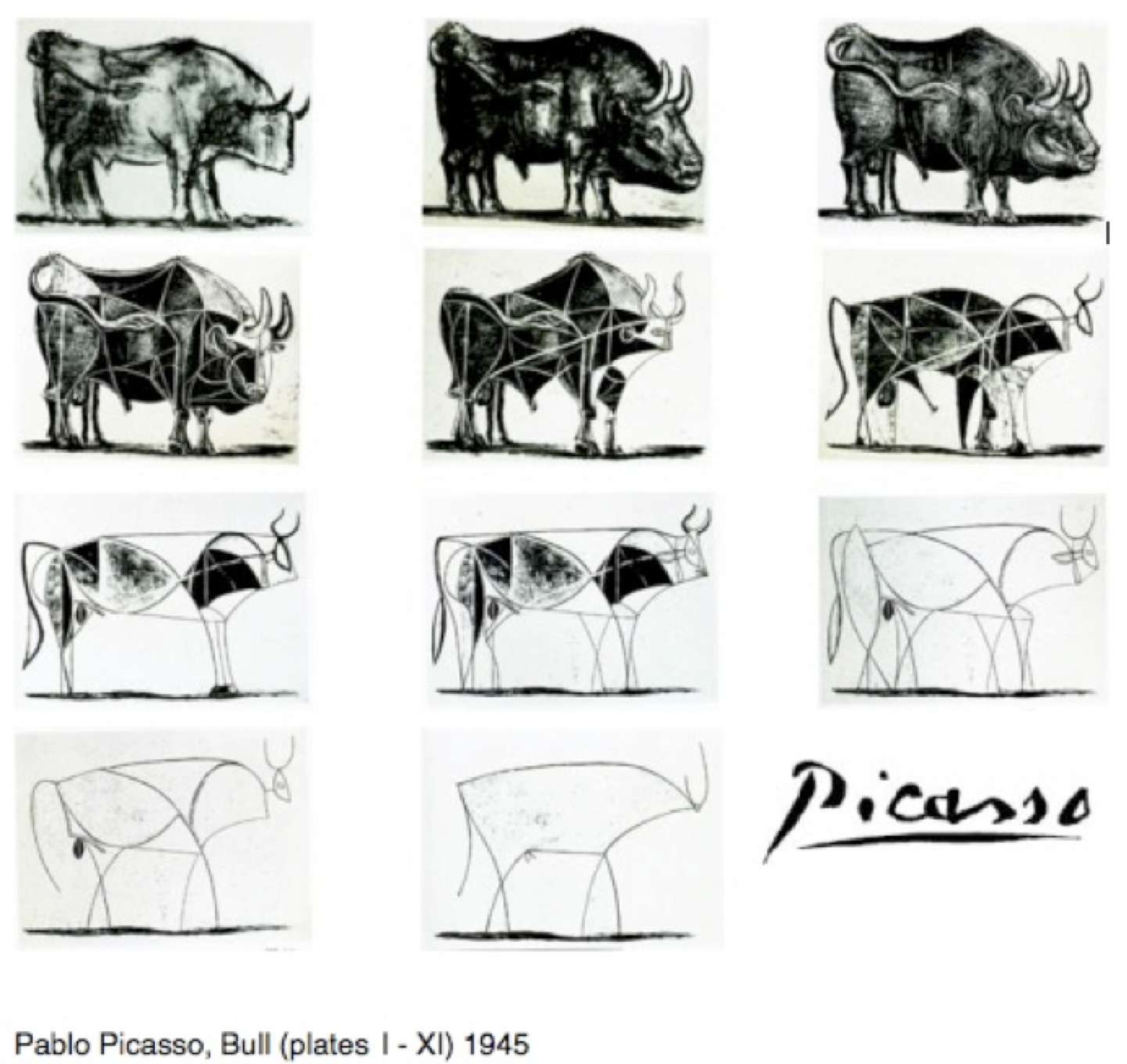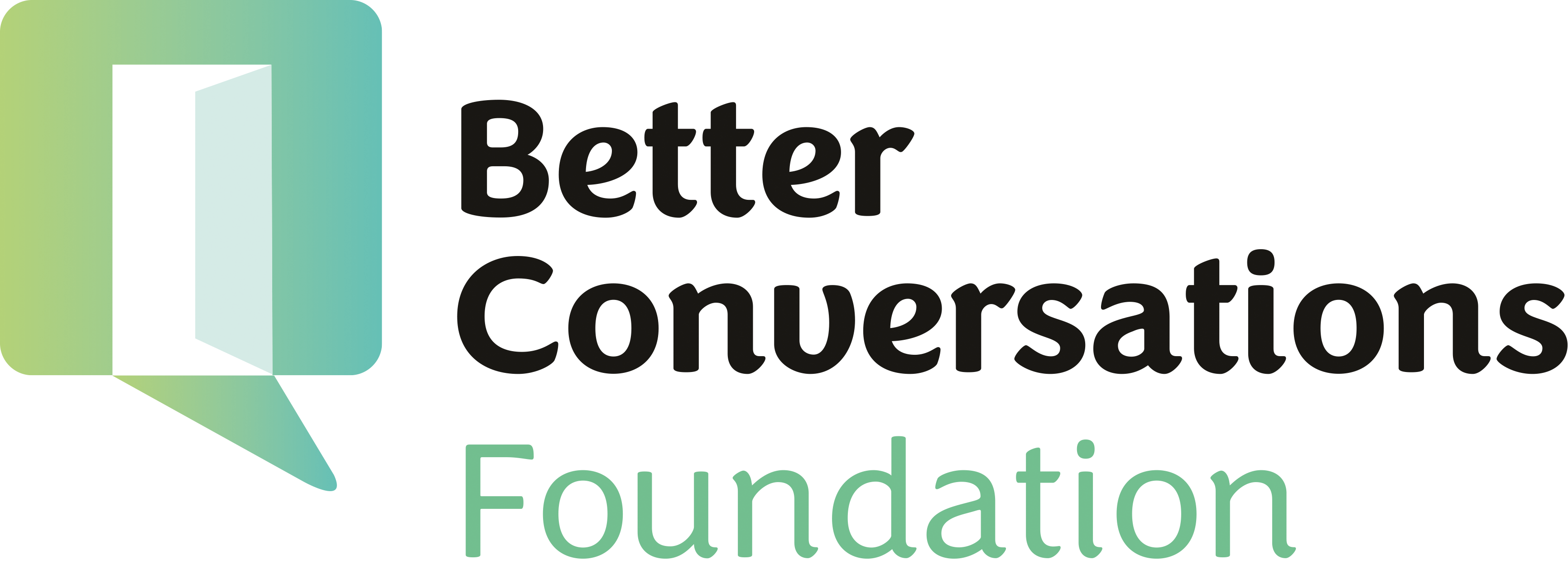What links Bulls and Better Conversations?#
We’ve been working on Better Conversations for a while now. We’ve iterated and improved the course and learned a lot along the way. We’ve had to make some tough decisions about what to include and what to leave out, which we are often asked about. This article is an attempt to explain our thinking by framing it in the context of Picasso’s Bull Series[1].
Picasso’s Bull series and the creative process#
In this work, Picasso was experimenting with new media and taking an unconventional approach. He created a series of prints that show progression towards the essence of a bull. Over a period of time he found a representation that was enough to evoke the idea of a bull with just 12 lines[2].

It’s a wonderful insight into the creative process. First, the representation gets more complicated as more ideas/features are added. Then it is stripped down, deliberately focused on what matters in this context.
What is left is enough. Focusing attention on the simplest elements helps us come to terms with complexity.
But isn’t it strange that it can be done through such simple means? Whatever is most abstract may perhaps be the summit of reality.
— Pablo Picasso
So what’s this got to do with Better Conversations?#
The approaches that inspired earlier versions of the Better Conversations course come from the field of Clean Language[3] (also referred to as ‘Clean’). David Grove developed Clean as part of his psychotherapeutic practice over many years and collaborations.
David’s original work was extended by others through developments like Symbolic Modelling and Systemic Modelling. We can work with Clean in specialised modalities in coaching and therapy. The picture has lots of features and detail, like those in the middle of Picasso’s series. And in such circumstances that’s what’s needed: attention to these details.
David continued to innovate his approach[4], exploring the spatial organisation of information in client’s minds, using more scripted processes to enable that[5]. He called this field Emergent Knowledge (EK). For me, this is similar to the progression of Picasso’s images of the bull. The space and relationship between the lines are as important as the lines themselves.
Most Clean-based trainings often focus on teaching depth, for use in coaching and therapy. It can take many years to master. Whilst some people have the time and resources to master Clean and EK, others don’t. And they may not need to, for what they would like to do. There’s a desire to be able to apply these skills in new settings, for example from within a team or organisation, minimising external interventions. That’s been the case in our own experience and from talking to other people. It’s what motivated us to create Better Conversations.
A consequence of this is that we have had to put aside some things and refine some concepts, models and details to make it make sense in everyday applications. And that has now set us on a different pathway from the original implementations of Clean Language and Emergent Knowledge.
Why did we make these choices?#
The short answer is that we tried these concepts and models, and they were less effective than we hoped they’d be, for a work context and for the people we serve. We’ve replaced them with simpler concepts and models that work with what we are placing attention on, and that are just enough to help frame the topics we explore.
After years of research, testing, and implementing feedback, we now have a framework that allows people to use Clean Language informally, without needing formal contracts as in a coaching or therapeutic relationship.
For example, we’ve considered carefully how we introduce Clean Language to people, and decided not to cover the question that elicits metaphor (“…that’s like what?”). This question requires advanced trainings and framing in a professional coaching and therapeutic context. We’ve also moved away from Systemic Modelling as some of the underlying models are problematic in a work context and lack robust research.
What’s the impact of these choices?#
By refining and simplifying our approach, we enable people to improve their conversations using Clean Language, Emergent Knowledge, and other effective communication techniques in just a few days, instead of years. Our framework distills some core principles of these methods, making them accessible and practical for a broad audience.
We believe these skills are valuable and want to share the work we have done widely. Our course materials are freely available under Creative Commons. This approach makes sense for us as a tech company, as these skills are essential for our work and the people we serve. It’s proving to be a powerful way to help people understand each other better and work together more effectively.
Better Conversations is focused on people’s lived experiences and their personal agency. That is the level at which each one of us can attend to things and enable change to happen. It’s what matters most to us. It’s why we do what we do.
